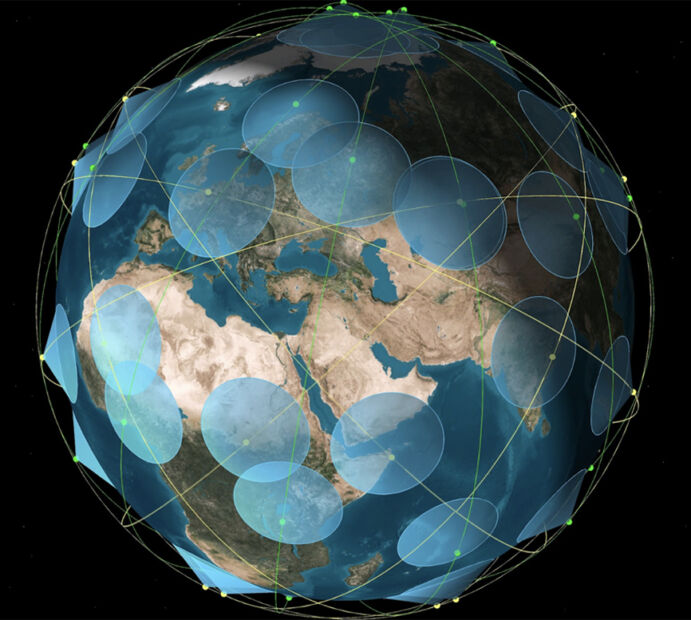OQ receives US patent for satellite synchronisation
- December 14, 2022
- Steve Rogerson
- OQ Technology

The US Patent & Trademark Office has granted OQ Technology, a specialist in 5G IoT satellite services, patents for its frequency synchronisation and timing synchronisation technology.
The two synchronisation technologies are already used for communicating with the satellites in the Luxembourg-based company’s growing 5G IoT constellation connecting IoT devices globally.
Following the patent grant for its power-saving wake-up technology, OQ’s remaining three technologies pending patent applications in the USA and the EU are IoT device localisation, inter-satellite link technology, and a satellite system design and network architecture for cellular IoT communication between satellites and ground stations.
Together they close the gap for latency critical applications and provide high data density, quality of service and fast response times. Applications requiring such fast and real-time data processing via satellite IoT (satIoT) include asset tracking, drone control, vehicle telematics, artificial intelligence critical alarms, automated transport and smart cars.
“The company is going from strength to strength,” said Omar Qaise, CEO of OQ Technology. “With frequency licences and chip partnerships in place, OQ Technology has become the first company to operate the beginning of the world’s first constellation of low Earth orbit [LEO] satellites providing 5G coverage for IoT devices based on standardised 3GPP cellular technology for narrowband-IoT. We have been forward-thinking in patenting these innovative technologies back when we started and we welcome very much that 3GPP release 17 is in-line with our vision.”
The technology behind the two patents synchronises communications during data transmissions and thus improves the signalling between terminal devices and base stations. Effectively, they compensate for both frequency change issues due to the Doppler effect and timing shift issues, when sending data over great distances and between moving objects. Together they improve the quality of data transmissions and data rate capacity, and they help save energy. As another direct benefit to users, it means they can receive faster and efficient transmissions packed with more data and with fewer transmissions.
OQ Technology has been specialising in satellite-based 5G communications via LEO since it created the first universal plug-and-play IoT device that can provide connectivity using LEO satellites.
This year it started to operate the beginning of a constellation of LEO satellites to provide 5G coverage for IoT devices based on standardised 3GPP cellular technology for NB-IoT. The next satellite being added will be Macsat. Scheduled to launch in March 2023, it aims to demonstrate more advanced 5G IoT services.
The company has also developed a technology using standard mobile chips that are much cheaper than expensive legacy satellite chips. They are essential to keep costs low when roaming freely between mobile networks on the ground, which OQ’s IoT satellite constellation provides anywhere in the world.
OQ Technology operates a constellation of LEO satellites providing 5G coverage for IoT devices based on standardised 3GPP cellular technology for NB-IoT. Its technology is available for mobile operators and users in industries such as energy, mining, logistics, maritime, agriculture and defence. The company’s patented technology can be used to connect existing cellular chips, allowing billions of users around the world to have ubiquitous IoT connectivity anywhere using both terrestrial and satellite networks.




